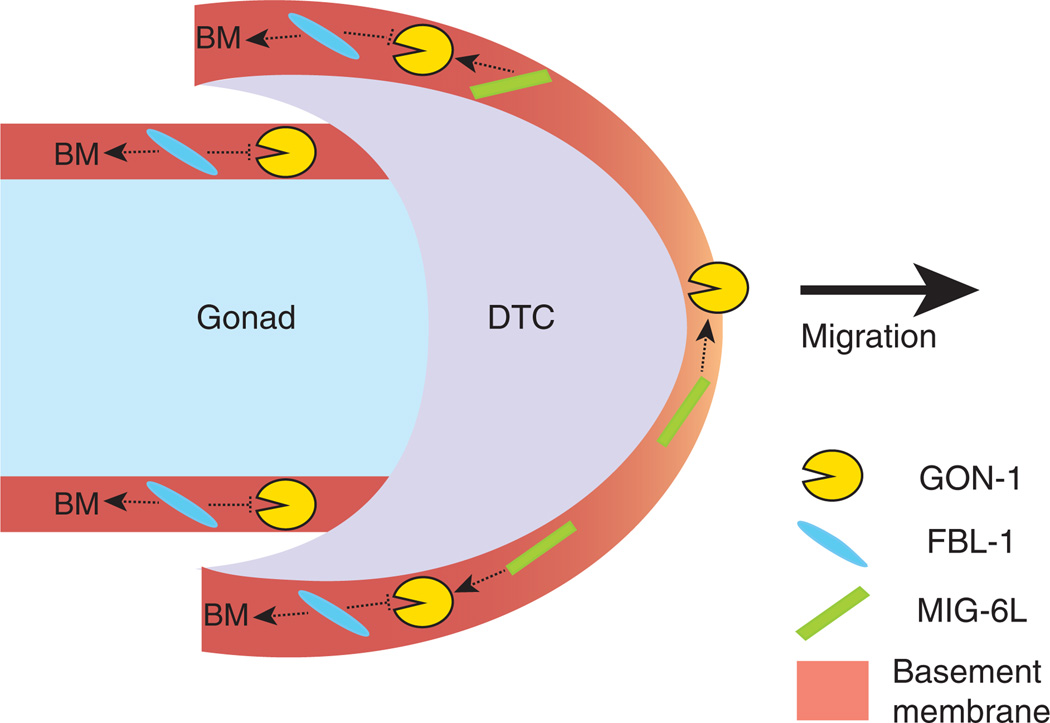FIGURE 4.
A molecular model for the commencement of distal tip cell (DTC) migration. Both GON-1 and MIG-6L are crucial for DTC migration, and we speculate that MIG-6L positively regulates GON-1 activity or localization (dotted arrows). Mutant phenotypes suggest that FBL-1 may act to maintain the integrity of the basement membrane (BM, dotted arrows) and this effect of FBL-1 might limit GON-1 activity (dotted repression). Because GON-1 and MIG-6L are expressed by the DTC, their expression levels are potentially higher than that of FBL-1 in the DTC basement membrane. We propose that this imbalance in expression results in an optimum level of GON-1 activation and matrix remodeling, perhaps at the front of the DTC (light orange BM), to allow DTC migration. By contrast, higher levels of FBL-1 in the gonadal basement membrane limit the ability of GON-1 to remodel the matrix or to support migration.

